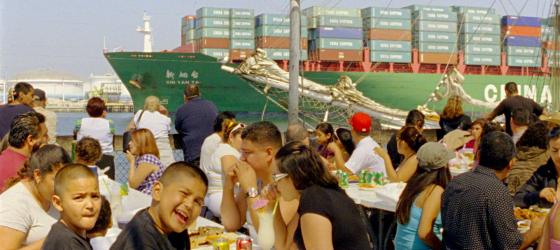The teaching activity fuels transfers of knowledge, towards and from the students, and offers exciting fields for experimentation in the PULSE project.
COASTAL DESIGN LAB AND OTHER EXTREME ENVIRONMENTS
"Port-City Architectures. Inclusive and Hybrid Approaches for Land-Sea Settlements"
University of Genoa - DAD
Master Degree Course in Architecture, a.y. 2022/2023
Professors: Beatrice Moretti, Michele Manigrasso
Marked by a deep-rooted dichotomy, land and sea have often been described emphasizing their antitheses rather than their overlaps. Yet, land and sea, as well as city and port, are characterized by continuous exchanges. On this basis, we can recognize that, along the border that divides and connects land and sea, there is a linear sequence of operating machines in different state of disposal. They are port-city architectures that define a peculiar landscape: through this amphibious line, in fact, each port has matured its own nature, so extreme as to outline a new architectural typology.
The course "Port-City Architectures. Inclusive and Hybrid Approaches for Land-Sea Settlements" deals with urban/architectural design in an inhabited/developed coastal context, confronting the relation between the built environment and the sea, coastal environmental issues, as well as issues of adaptability over time to address changes in climate as well as in social/cultural patterns of life.
Port-city architectures physically occupy the port-city border – or better threshold – increasing its heterogeneity: they are not merely buildings generated by a functional mix, but special architectures that inhabit the threshold, becoming carriers of new functions and uses.
With the purpose of experimenting inclusive and hybrid approaches, the course aims to develop design solutions of port-city architectures in which both urban and port programs coexist within the same building(s): e.g., a large hotel and an ecological production plant, a bathing facility and a shipyard, a residential housing estate and a cruise terminal, etc.
MORE HERE
Didactic Sheet
"SOLID WATER. Port Dams as Land-Sea Architectures and Settlements"
University of Genoa - DAD
Master Degree Course in Architecture, a.y. 2023/2024
Professors: Beatrice Moretti, Matteo Vianello
Architectural approaches to port infrastructures – such as piers, docks, platforms and seawalls – are historically characterized by a land-centered perspective. For centuries, the space of the sea has been understood on the one hand as an empty place, on the other as a politically reclaimable surface to occupy, a solid dryland. Looking at the sea as an environment affected by urbanization, activates a reversal of this common idea, leading to a vision able to re-signify the transformation of the liquid environment and its main settlements and architectures.
The course “SOLID WATER. Port Dams as Land-Sea Architectures and Settlements” adopts as a case study/application the most extreme infrastructures related to the operation of coastlines and ports - i.e. port dams - large offshore architectures of an operational nature built in the open sea, in the absence (or almost) of ground.
The course takes as its case study and application the most extreme infrastructures related to the functioning of operational coastlines and ports, the port dams, i.e. the massive walls that, positioned off the coast in the open sea, protect land from being covered or damaged by the sea or defend a port from the action of powerful waves.
Built in ports all over the world since at least the 18th century, port dams are exceptional architectures stretching between land and sea and submerged in depth in a vertical relationship with the water element. As solid water components, they are part of the port-city architecture system that constitutes a catalogue of recurring and analogous artifacts, an exclusive field of narrative and architectural design of port spaces. Their geometries respond, like any port device, to operational rules imposed in this case by maritime engineering, hydraulics and navigation. It’s often from the setting of a major dam that the transformations of the most important global ports have originated, at the same time it is from the expansion of a port, made possible by new protective works at sea, that the cities connected to the port infrastructure have developed in extension, functionality and beauty.
The course aims to elaborate on the idea that large operational infrastructures such as dams respond to spatial formation rules that differ from land-based artefacts and, at the same time, can be recognized not only as mere functional devices but as architectures capable of accommodating, including and triggering extreme and complex activities.
MORE HERE
Didactic Sheet
